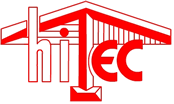Glossary of Truss Terms
AXIAL FORCE - A push (compression) or pull (tension) acting along the length of a member. Usually measured in pounds.
AXIAL STRESS - The axial force acting at a point along the length of a member, divided by the cross-sectional area of the member. Usually measured in pounds per square inch.
BEARING - Structural support of a truss, usually walls, hangers, or posts.
BENDING MOMENT - A measure of the bending effect on a member due to forces acting perpendicular to the length of the member. The bending moment at the given point along a member equals the sum of all perpendicular forces, either to the left or right of the point, times their corresponding distances from the point. Usually measured in inch-pounds.
BENDING STRESS - The force per square inch of area acting at a point along the length of a member, resulting from the bending moment applied at that point. Usually measured in pounds per square inch (psi).
BOTTOM CHORD - A horizontal or inclined (scissors truss) member that establishes the lower edge of a truss. Usually carrying combined tension and bending stresses.
BUILT-UP BEAM - A single unit composed of multiple wood members having the same thickness but not necessarily the same depth, which provides greater load-carrying capability as well as greater resistance to deflection.
BUTT CUT - Slight vertical cut at outside end of truss bottom chord made to insure uniform nominal span and tight joints.
CAMBER - An upward vertical displacement built into a truss, usually to offset deflection.
CANTILEVER - The part of a structural member that extends beyond a support with no support at the other end.
CLEAR SPAN - Horizontal distance between interior edges of supports.
COMBINED STRESS - The combination of axial and bending stresses acting on a member simultaneously, such as occurs in the top chord (compression + bending) or bottom chord (tension + bending) of a truss.
CONCENTRATED LOAD - An additional load centered at a given point. An example is a crane or hoist hanging from the bottom chord at a panel or mechanical equipment supported by the top chord.
DEAD LOAD - Permanent loads that are constant on the truss, e.g.; the weight of the truss itself, purlins, sheathing, roofing, ceiling, etc.
DEFLECTION - Downward vertical displacement of a truss due to loads.
DURATION OF LOAD FACTOR - An adjustment in the allowable stress in a wood member, based on the duration of the load causing the stress. The shorter the duration of the load, the higher the percent increase in allowable stress.
HEEL - Point on a truss at which the top and bottom chords intersect.
JOIST - A parallel chord truss with the least chord dimension in the vertical plane.
LATERAL BRACE - A member installed and connect at right angles to a chord or web member of a truss to resist lateral movement.
LEVEL RETURN - Lumber filler placed horizontally from the end of an overhang to the outside wall to form a soffit framing.
LIVE LOAD - Any load which is not of permanent nature, such as snow, wind, movable concentrated loads, furniture, etc. Live loads are generally of short duration.
NOMINAL SPAN - Horizontal distance between outside edges of the outermost supports.
OVERHANG - The extension of the top chord of a truss beyond the bearing support.
PANEL - The chord segment defined by two successive joints.
PANEL LENGTH - The centerline distance between joints measured along the chords.
PANEL POINT - The point of intersection where a web (or webs) meets a chord.
PEAK - Point on a truss where the sloped top chords meet.
PLUMB CUT - Top chord end cut perpendicular to the building floor line provided for vertical installation of facia.
PURLIN - A horizontal member in a roof perpendicular to the truss top chord used to support the decking.
QUARTER POINT - Point on a Fink (T43) or Howe (T44) truss where the webs connect to the top chord. Also one fourth the distance between two joints from either joint.
REACTION - Forces acting on a truss through its supports that are equal but opposite to the sum of all dead and live loads.
SLOPE (Pitch) - The inches of vertical rise in 12 inches of horizontal run for inclined members, generally expressed as 3/12, 4/12, 6/12, etc.
SPLICE POINT (top and bottom chord splice) - The point at which two chord members are joined together to form a single member. It may occur between panel points or at a panel point.
SPLIT TRUSS - Trusses used where a fireplace, skylight, etc. intersects the truss span, parallel or perpendicular to the truss.
SQUARE CUT - A cut perpendicular to the slope of the member at its end.
STRESS DIAGRAM - Graphical depiction of axial forces and moments as they interact within the members of a truss.
THIRD POINT - Point on a Fink (T43), truss where the webs connect to the bottom chord.
TOP CHORD - An inclined or horizontal member that establishes the upper edge of a truss, usually carrying combined compression and bending stresses.
TRUSS - A pre-built component that functions as a structural support member. A truss employs one or more triangles in its construction.
WEBS - Members that join the top and bottom chords to form the triangular patterns that give truss action, usually carrying tension or compression stresses (no bending).


